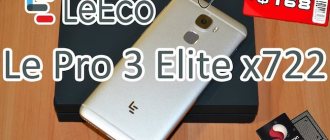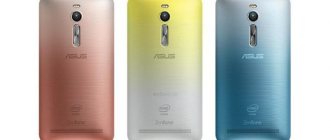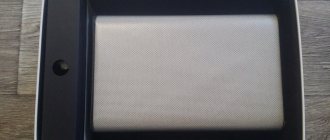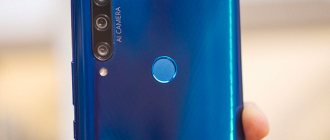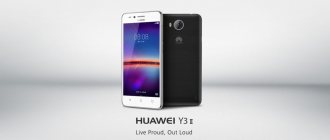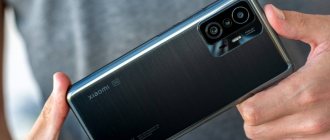The Chinese company LeEco entered the Russian market loudly - I think many of you have, to one degree or another, seen advertising from YouTubers, on TV or on the Internet. This is understandable; in its homeland, the company is one of the major producers of not only various equipment, but also video content. And when I talk about video content, I mean the largest online video platform in China.
Subscribe to our Telegram
Subscribe to our Telegram
But let’s not go into a meaningless discussion of all the development potentials of the company in Russia; today we will talk about the Le 2 smartphone, its characteristics, appearance and capabilities.
Specifications
- Processor: Qualcomm Snapdragon 652, 8 cores: 4 ARM Cortex-A72 @1.8 GHz + 4 ARM Cortex-A53 @1.4 GHz, Adreno 510 @600 MHz
- Operating system: Android 6.0.1
- Display: IPS 5.5″, 1920×1080, 401 ppi
- RAM: 3 GB
- Internal memory: 32 GB
- Networks: Nano-SIM (2 pcs.); GSM/GPRS/EDGE (850/900/1800/1900 MHz); WCDMA/HSPA+ (850/900/1700/1900/2100 MHz); LTE FDD Band 1/2/3/4/5/7/8/20; TDD Band 38/40/41; Wi-Fi 802.11a/b/g/n/ac (2.4 and 5 GHz); Bluetooth 4.1
- Navigation: GPS, A-GPS, Glonass, BDS
- Cameras: main 16 MP, autofocus, f/2.0, 4K video; front 8 MP, f/2.2
- Sensors: proximity, lighting, magnetic field, fingerprint, accelerometer, gyroscope, infrared
- Battery: 3000 mAh, support Quick Charge
- Dimensions: 151×74×7.5 mm
- Weight: 153 g.
INTRODUCTION
Smartphones from the Chinese company LeEco, which previously released its gadgets under the LeTV brand, are increasingly gaining popularity in the international market.
Just half a year ago, the Chinese company made people talk about itself even more by entering the Russian market, receiving official notification for its products and opening the LeEco showroom in Moscow. But how a Chinese company entered the Russian market without official Russian firmware is a very interesting question. But one thing I can say with confidence is that the marketing and PR campaign was beneficial for the brand and literally everyone interested in Chinese gadgets has heard about this brand. But how are things really going? Let's try to figure it out and talk about it as it is, as they say, “without cuts.” So, let's go... The smartphone was ordered on October 15, 2016, but I only got around to writing a review now. Delivery took 23 days and, literally, before Singles' Day, I received the hero of the review. The shipment was delivered via Finnish Post For lovers of track numbers, our hero is delivered in the original retail box typical of the Leeco brand. The minimalistic packaging design combines only the company logo. Nothing more unnecessary... On the reverse side there is also no additional graphics. The white style is maintained on all sides of the packaging. At the bottom of the box, as expected, the manufacturer indicated the technical specifications and IMEI numbers. Of course, all technical specifications are in Chinese
Inside the package, everything is neatly laid out: the equipment is separated from the gadget itself by a partition, the wires are packaged in a separate box...
... which includes a standard set: charger, cable and instructions for use. It is worth noting the fact that, among other things, the LeEco Le 2 model comes with an adapter cable from a USB Type C connector to a jack 3.5 connector. You probably already know that the smartphone from this brand does not have the usual jack 3.5 headphone jack. “Ears” can only be connected in one way - through an adapter. In addition, at the moment you can find headphones with a Type C connector on sale. But they are not included in the standard package. Just an adapter
As I already noted, instructions for use and a warranty card are supplied with the smartphone. Of course, I will not focus on this, I will simply note this fact. The language of the user manual is Chinese Personally, I really liked the approach of the designers and marketers. Everything is thought out to the smallest detail. Even such a trinket as a standard paperclip has an engraving in the form of a logo class=”aligncenter” width=”800″ height=”533″[/img] As for the charger, there can be no talk of ergonomics. The biggest charger I've ever gotten my hands on
On the front side there is a USB connector, a brand logo and an icon confirming support for Quick Charge 3.0. According to the stated characteristics, the charger is capable of delivering 3 amps at a voltage of 3.6-8.0 volts and 2 amps at 12 volts. The only negative is the American format plug and the lack of an adapter to the European standard. But here the questions are exclusively for the store, since the seller did not take care of the Russian buyer. Having become acquainted with the equipment, let’s move on to the hero of the review himself. But first, a little about the technical characteristics
Specifications
5.5-inch full bonding Incell capacitive screen, FHD (1920×1080 pixels) screen display, 403PPI CPU: Helio X20 MTK6797 deca core 64bit 2.3GHz, GPU: Mali-T880 eUI 5.6 (Base on Android 6.0 OS), 3GB LPDDR3 RAM + 32GB ROM eMMC5.1 Dual camera:8.0MP front camera and 16.0MP back camera with flashlight,4K video Dual Nano SIM Card Dual Standby Metal unibody,3000 mAh battery with fast charge,2.4G/5G dual Wifi Support 4G/3G/Wifi /GPS/Bluetooth/multi-language/TOUCH ID/Type-C Networking:2G GSM:850/900/1800/1900MHz, CDMA: BC0/BC1 3G WCDMA:850/900/1900/2100MHz, TD-SCDMA: B34/ 39; EVDO:BC0/BC1 4G FDD-LTE:1800/2100/2600MHz, TDD-LTE: 38/39/40/41MHz
The seller's page presents three color options for the smartphone: rose gold, gold and silver. In our case, the smartphone in review is in gold design. As for the screen size, and the gadget under review has a size of 5.5 inches, then not everything is so simple. At first glance, the gadget may seem like a “shovel”. But this is only the first impression. The smartphone fits perfectly in your hands thanks to its ergonomic design. This feeling is especially true after several months of using the “beetle” from the Chinese brand Lenovo. For those who don’t remember, the design of the ZUK Z2 is made in the form of a small brick
Additional Information
Out of the box, the smartphone comes with a protective silicone case. The front side initially had a transport film, which was peeled off as unnecessary. The main protective film is not provided as standard
Appearance
It must be admitted that the appearance of Le 2 does not have any special claims to uniqueness - we have seen such a design more than once. Here we have an aluminum body with rounded edges, and stripes on the back panel, under which the antennas are hidden.
On the sides of the USB Type C connector at the bottom, at the end, there are speakers, and an LED indicator with a front camera lens on either side of the earpiece at the top.
On the front panel there is a 5.5-inch screen framed by a thick black 3 mm frame. Below, under it, are the touch keys “menu”, “home” and “back”. They light up pleasantly when touched.
There is a glossy metal edging along the perimeter of the case. On the back panel, made of a textured, slightly rough material, there is a main camera lens, a fingerprint sensor and an LED flash.
Below the antenna is the company logo.
The connectors are located in a standard manner: on the left we have a slot for nanoSIM cards. On the right are the volume keys and power on/off keys.
At the top of the end, where the audio output for the headset is usually located, there is an infrared transmitter point. Initially, it is designed for the user to use Le 2 as a remote control for LeEco TVs, because one of the main directions of the company, as I already said, is video content. There are no LeEco brand TVs in Russia yet, although everything is moving towards this, and yet the smartphone can be used as a remote control for a third-party TV or any other equipment; the software contains a gigantic database of devices from almost all well-known manufacturers.
And now about the missing 3.5 mm audio jack. The smartphone does not have it; instead, there is an adapter that comes in the package, and it must be connected to the USB Type-C connector. It’s inconvenient, but it looks like a new iPhone and was done before.
Comparison with analogues
Lenovo Zuk Z2, LeEco Cool 1 and Xiaomi Redmi Note 3 Pro are analogues of the hero of the review.
LeEco le 2 vs Xiaomi Redmi Note 3 Pro
First, let's compare LeEko with Xiaomi Redmi Note 3 Pro, highlighting the advantages of each model over the other.
| Leeko's strengths | Xiaomi's strengths |
|
|
Both smartphones have good characteristics, but Xiaomi is much cheaper, and Leeko is more productive. So the buyer must decide what is his priority.
Leeko Le 2 or Lenovo Zuk Z2?
In this price segment, Leeko's competitor is Lenovo Zuk Z2. It is more productive, plus it shows itself as a powerful device in “heavy” games. Lenovo's glass case will be a plus for some because of its aesthetics, but for others it will be a minus because such a panel collects fingerprints. Also, Lenovo's main camera takes worse pictures.
Leeko le 2 and Leeko Cool 1
LeEco Cool 1 is the most balanced analogue, but it also has drawbacks: the design is trivial, the camera is budget, and the screen does not have a wide viewing angle.
Display
LeEco Le 2 is equipped with a 5.5-inch screen with FullHD resolution 1920x1080 and a pixel density of 401 ppi. The screen is made on an IPS matrix and supports up to 10 simultaneous touches.
There is correct and adequate automatic brightness adjustment. It is worth noting that the maximum brightness is enough for comfortable reading of information from the screen even in bright daylight, and a good anti-glare coating makes working with the screen as convenient as possible.
As for the oleophobic coating, it is not only present, but also copes with its main task perfectly. There aren't many fingerprints left on the screen, and those that do appear are easily erased.
In the screen settings you can set the level of contrast and saturation, but even with the default settings, the image looks the most advantageous.
Viewing angles and screen brightness
As for viewing angles, things are excellent here. At almost full angle, the IPS display matrix allows you to view images without color distortion. I'll try to convey the quality of the picture through a photograph.
If you've seen my previous reviews of smartphones, you've probably noticed that I keep a table of the screen brightness of smartphones that pass through my hands.
This device was no exception. The bright screen allows the smartphone to always remain readable in sunny weather, and the minimum brightness allows you not to strain your eyes at night. Therefore, the greater the difference between the minimum and maximum illumination, the more advantages this device has. So, dear friends, let's take a look and compare the brightness of the smartphones that I've had in my hands. In my rating for the brightness of smartphone screens, the device was able to overtake all its competitors, showing a brightness result of 548 Lux. As for the minimum brightness, the device slightly lost ground to its brothers from Xiaomi: Redmi 3s and Remi Note 3 Pro. But even so, the device has an excellent minimum brightness, which allows you to use the gadget at night without much stress. A detailed updated table with technical illumination data is available at this link
Camera
The smartphone received a main camera with a resolution of 16 megapixels with LED flash and autofocus and a front camera with a resolution of 8 megapixels.
As for the pictures taken with the main camera, they come out standard for this resolution: the pictures are good, but not impressive. In principle, if you want to photograph nature or the shadow of a building for publication on Instagram, you will be able to convey the colors.
Pixelation is minimal and noticeable when shooting in the dark and at night.
In the camera settings you can adjust ISO, white balance, contrast, etc.
The only thing that surprised me was the macro shooting. It is simply impossible to focus on something closer than 10 centimeters from the camera. The press service assures and provides evidence that a day after the smartphone was delivered, a firmware update was received that corrected this problem.
The front camera surprisingly takes pictures at a level lower than I'm used to seeing from 8 MP lenses. Selfies turn out to be a C, blurred and overexposed, but the camera is quite suitable for video chats.
Video is recorded on the main camera in 4K resolution.
SYNTHETIC TESTS
Having gotten to know our review hero a little, let’s move on directly to the tests and see what our device is capable of.
So, let's go... Wifi Analyzer and SpeedTest
The key point for any smartphone user is a stable Wi-Fi connection. The test will be carried out a few meters from the router in the next room. A load-bearing wall separates the two rooms. But first, let's measure the connection speed. Let me remind you that the maximum channel speed from the provider is 50 Mb/sec.
Additional information
GPS test
As for the built-in GPS module, I was very pleased with its performance. In a room (panel house) near a window, when first turned on during a cold start, it instantly found 24 satellites and within 8 seconds connected to 10 of them. He was able to connect to a maximum of 12 satellites
AnTuTu Benchmark 6.2.1
The test in Antutu scored 96,968 parrots and showed the following data (I put the tests under a spoiler)
Additional Information
Geekbench 4
In Geekbench 4, the gadget scores 1600 points in the main test and 4324 in multi-core tests
Additional Information
AIDA64
Epic Citadel Test
High Performance - 51.4 fps High Quality - 51.3 fps Ultra High Quality 40.0 fps
Additional Information
At this point, I think it’s worth completing the tests and moving on to an equally important point in the review - the conclusions
OS and interface
The smartphone runs Android 6.0.1 and the proprietary EUI 5.8 interface.
And if usually in Chinese companies the interface is only slightly modified (icons, background), then LeEco decided to work hard on its shell. There is no menu of installed applications, the notification menu, reboot menu and even the quick access menu have been changed.
If you like to play with the themes and appearance of your smartphone desktops, then EUI 5.8 will be a delight for you.
In addition to changing themes, you can arrange application icons in a random order, change not only the font size, but also the scaling of the desktop in general, and also disable touch control buttons.
You can also install a system for controlling cameras, players, or unlocking programs on the fingerprint scanner.
There are only three pre-installed programs: a phone manager that allows you to control the smartphone’s memory, a weather widget and applications for controlling the smartphone as a remote control.
This, of course, does not count the partner applications. I can’t write anything about them - my sample was from the earliest batches and they didn’t work there - but for buyers everything works as it should, including the promised 3 months of content for free.
SOUND AND SPEAKER
Recently, more and more users have become interested not only in the camera, but also in the volume of the audio speaker and its sound quality.
And I decided to do some kind of test on the volume of melody playback. This selection includes only those smartphones that I personally was “familiar” with. The main goal of the task is not only to find out and measure the sound volume, but also to try to convey to you the purity and quality of sound in each of the devices. The conditions for all gadgets are the same - the sound is measured on one test device, while one melody is played. The composition is the well-known “strong” song “Cuckoo” performed by Polina Gagarina, the flow rate is 320 kbit/sec. As the test showed, the subject had the loudest speaker among all the gadgets that passed through my hands. I would also like to note that the sound produced is quite clear compared to most smartphones that I have tested. And at the moment the result is this - first place among 10 fairly well-known phones from different price categories
A detailed updated article on this topic with description and photographs can be found here
Iron
The hardware platform is an 8-core Qualcomm Snapdragon 652, consisting of 4 ARM Cortex-A72 cores with a clock frequency of up to 1.8 GHz and four 64-bit Cortex-A53 cores with a frequency of up to 1.4 GHz.
GPU Adreno 510 @600 MHz is responsible for graphics. The amount of RAM is 3 GB, the amount of internal memory is 32 GB. Unfortunately, there is no option to expand the memory.
LeEco didn't skimp on performance. This hardware is enough for multitasking, running programs and heavy applications and even demanding games. There will be no problems with scrolling pages in the browser or freezing of the interface.
Despite the load on the smartphone and the number of running programs, heating at the top of the Le 2 is not critical.
Review of the LeEco Le 2 (X527) smartphone
We have already written several times about the Chinese LeEco (formerly LeTV) smartphones, which are very interesting in terms of price/performance ratio. What it looks like “on paper” is one thing, but we finally had the opportunity to touch one of the company’s current smartphones and form an opinion about it. First, it’s worth telling a little about LeEco itself. This is a Chinese company that was created back in 2004 and was called LeTV. The name was fully justified, since the company began as a manufacturer and supplier of video content. She succeeded in this and by 2010, LeEco became the leading online video platform in China with a huge number of its own cinemas, its own film studio Le Vision Pictures (LeVP) for the production of video content and rights to foreign blockbusters and TV series. It is quite logical that with such successes it was possible to think about further expansion of the areas of activity. At the moment (in addition to video content), LeEco produces its own electronics, in particular televisions, smartphones, smart bicycles, and even has its sights set on creating an electric supercar, LeSEE, which will be positioned as a competitor to the Tesla Model S.
One of the main features of LeEco gadgets is a common ecosystem, including for the distribution of your own content. This also applies to smartphones. Unlike Xiaomi, which is doing well in China and is in no hurry to expand distribution channels or open representative offices in different countries, LeEco is now actively dealing with this issue. The company decided to enter the markets of Eastern Europe. Russia became the first country, so we can expect it here in the near future. The company's current smartphones are the flagship LeEco Le Max 2 and the middling LeEco Le 2 (X527), which we will get to know today.
What is this?
LeEco Le 2 (X527) is a smartphone with a metal body, a 5.5-inch FullHD screen, a powerful eight-core 64-bit Qualcomm Snapdragon 652 processor and Android 6.0 with a proprietary EUI shell.
Why is he interesting?
LeEco currently has two main current models: the flagship Le Max 2 with a QHD display and Snapdragon 820 and the more modest LeEco Le 2. The latter is available in different modifications, including the MediaTek Helio X20; we are reviewing the X527 modification with a successful, powerful eight-core Qualcomm Snapdragon 652, 3 GB of RAM and 32 GB of internal memory, a 5.5-inch 1920x1080 IPS display, a metal body, a 16-megapixel main camera with f/2.0 aperture and the ability to shoot video in 4K. Of course, there is a fingerprint scanner, which is now not installed except in budget models. Among the features: Le 2 is (formally, at the time of announcement) the world’s first phone without a 3.5 mm audio jack and with support for its own technology of continuous digital audio without loss of quality (CDLA), of course, with corresponding headphones. We'll talk about this a little later. The smartphone has a 3000 mAh battery with support for its own Le SuperCharge fast charging. Well, the last interesting point is the price tag of $170 for all this, which makes the smartphone even more interesting.
What is in the box?
The smartphone is delivered in a cardboard box with a matte black finish and a silver LeEco logo on the lid. It looks concise and good. Nothing superfluous, just a logo and a sticker with the necessary technical information on the bottom. The kit includes the smartphone itself, a power supply (2/3 A; 3.6/8/12 V), a USB Type-C - USB cable (by the way, a full-size USB on the cable is also symmetrical), a transparent silicone bumper, an adapter with USB Type-C to the more familiar 3.5 mm headphone jack, a paperclip for removing the SIM card tray and instructions:
How interesting does he look?
LeEco took a practical approach to the issue of appearance and design and there are no surprises in this regard. Most of the body is made of metal. The front panel is covered with flat protective glass, there are no 2.5D curves. Below and above the screen there are silver inserts (in our case), on the sides of the frame are black, they become visible when the screen is turned on. Below the screen are three backlit touch buttons. It turns off automatically. Above the screen is a standard set of speakers, front camera, a set of sensors and an LED notification indicator. The front camera and the sensor unit are located symmetrically on either side of the speaker:
Below the screen are three standard Android touch buttons “back”, “home” and an application manager (in this case there is also a panel with switches):
At the bottom end there is a USB Type-C, 6 round holes symmetrically (for a microphone and an external speaker) and two plastic inserts:
On the left side there is a tray for two nano SIM cards:
Installation of MicroSD memory cards is not provided. Although subjectively, 32 GB is quite enough:
On the top edge there is only an IR blaster for controlling home electronics. As we remember, the smartphone did not receive the usual 3.5 mm headphone jack:
The volume and power control buttons are located on the right side. They are also metal, well fitted, and moderately tight. They are convenient to use and the location is quite familiar:
The back panel is made almost entirely of brushed metal, which does not show fingerprints. There are plastic inserts in the lower and upper parts for adequate operation of wireless interfaces. Below is the LeEco logo and technical information in small print:
The camera module is quite large, but the lens practically does not protrude beyond the body. Above it is an additional microphone, on the side is a two-color LED flash. Below is a fingerprint scanner. It is made in the form of a small mirror platform slightly recessed into the body. Of course, it is constantly covered in fingerprints and there is no particular point in wiping it for aesthetic purposes:
Despite the absence of any exotic or unexpected solutions, the smartphone looks very nice and calm. It is assembled with high quality, there is nothing to complain about in this regard. The back panel has a rounded shape closer to the ends and it is comfortable to hold the smartphone despite the fact that it is a rather large 5.5-inch device. The kit includes a simple silicone protective bumper that serves its purpose. This is what LeEco Le 2 looks like in it:
How good is the screen?
LeEco Le 2 has a 5.5-inch screen with a resolution of 1920x1080, pixel density is about 401 ppi (the manufacturer specifies 403). There is a small black frame around the perimeter of the entire screen, like the Xiaomi Mi5, but given its size it is less annoying, and this is not a flagship, so such a move is quite forgivable, especially since the screen itself is of very good quality. The viewing angles are maximum, the brightness drops slightly, but this is quite expected:
The picture is very nice. In field conditions in the bright sun it was not possible to estimate the brightness reserve: it was not the right season, so in this regard we will limit ourselves to the indicators after measurements with a colorimeter. The manufacturer does not specify what kind of glass is used; it is flat, without fashionable 2.5D curves, but with a good oleophobic coating.
Multi-touch up to 10 touches supported:
For those who want to know more
Measurements using a colorimeter showed a maximum brightness of 361.548 cd/m2, a black field brightness of 0.311 cd/m2, and a contrast of 1163:1, which is very good. There is a utility for color adjustment with presets and a bunch of test images. We measured the indicators in LeTV mode. In this mode, the screen goes into cold colors, there is an excess of blue, in other modes the picture will be different:
The CIE chart shows close to standard readings in red and blue and some deviation in green. Graphs obtained using a colorimeter:
Comparison with other smartphones:
| Device name | White field brightness, cd/m2 | Black field brightness, cd/m2 | Contrast |
| LeEco Le 2 (X527) | 361.548 | 0.311 | 1163:1 |
| Xiaomi Mi 5 | 517.946 | 0.392 | 1321:1 |
| Lenovo Vibe Phab Plus | 263.331 | 0.27 | 975:1 |
| Huawei P9 | 420.175 | 0.541 | 777:1 |
| Meizu Pro 5 | 291.364 | 0 | ∞ |
How are things going with performance, memory, sound and battery life?
The smartphone has a fairly powerful eight-core Qualcomm Snapdtagon 652 processor with an Adreno 510 video accelerator and 3 GB of RAM. The smartphone is very fast, there can be no problems with applications and interface. The smartphone copes well with all modern games and, which is very pleasing, the case does not heat up even in heavy performance tests and the most demanding modern games:
As mentioned above, the built-in memory is 32 GB (of which about 24 GB is available), there is no support for memory cards. For some this may be a problem. All my footage is sent to the cloud, I mostly play games on my smartphone only during testing, and for music I use a separate player, so this volume is more than enough for me. Speaking of music, the smartphone produces very good sound, without significant dips or bends in any part of the frequency range (of course, with the equalizer turned off, which is also available). I listened to it on my headphones through the included adapter. LeEco has already released two headsets with USB Type-C connectors that support LeEco's proprietary Continual Digital Lossless Audio (CDLA) technology - continuous digital sound technology without loss of quality. According to LeEco, it provides the highest quality and clearest sound possible. In fact, I can’t say, because I didn’t have the opportunity to use it. The branded player has a familiar appearance with a full range of necessary functions:
The smartphone uses dual-band Wi-Fi 802.11 a/b/g/n/ac and Bluetooth 4.1, both modules work without any problems. There is also an infrared port for controlling equipment with the corresponding application. It differs little in principle from similar ones from other manufacturers; initially there is a ready-made remote control for LeTV TVs; you can add a bunch of other home electronics. Traditionally, the remote control made friends with my air conditioner without any problems, but did not find a common language with the receiver:
The smartphone works with global positioning systems GPS (A-GPS is supported), GLONASS and Beidou; a cold start takes no more than 10 seconds:
All other sensors (including the accelerometer and gyroscope) work without problems. The smartphone adequately counts steps and builds routes in Google Fit:
The smartphone uses a built-in 3000 mAh battery, which charges quickly thanks to proprietary Le SuperCharge technology. The older Le Max2 has support for Quickcharge 3.0 and can be almost fully charged in 30 minutes. 3000 mAh is quite modest by today's standards, for a 5.5-inch diagonal and a powerful processor. Despite this, the smartphone survives a day without problems with the wireless modules always on, synchronization, about 20 minutes of calls and about 60 minutes of games per day. The smartphone can play video for about 10 hours.
For those who want to know more
Under the hood of the LeEco Le 2 (X527) there is a 28-nanometer 64-bit 8-core Qualcomm Snapdragon 652 processor. It includes a block of four 64-bit ARM Cortex-A72 cores with a frequency of up to 1.8 GHz and a block of energy-efficient 4x Cortex-A72 cores. A53 with a frequency of up to 1.4 GHz. GPU – Adreno 510 with operating frequency up to 600 MHz. The amount of RAM is 3 GB, the built-in memory is 32 GB, an eMMC5.1 drive is used. The smartphone produces the results of previous flagships on Qualcomm or Exynos in synthetic tests and is comparable to devices on the flagship MediaTek Helio X20, so there are no problems with performance:
What about the firmware and interface?
The smartphone runs on Android 6.0.1 Marshmallow OS, of course, with a proprietary shell. LeEco calls it EUI, in this case version 5.8. In its homeland, LeEco has its own entire ecosystem with a bunch of services, of course, its own general account, and so on. In our case (in addition to the LeEco account), partner services with a 3-month share are preinstalled out of the box: Megogo, IVI, Amediateka, Zvooq and liters for 50 books. The interface itself is normally translated into Russian, there is no Ukrainian one (we hope that this is a matter of time). The organization is familiar in other shells. Most of the shortcuts have been redrawn, there are own applications for calls and messages. music and so on. All applications are on desktops and in folders, there are widgets:
There are different design themes, you can download additional ones, just like wallpapers:
The only thing that slightly confused me and which I never got used to was the lack of switches in the top curtain. At the top there are only notifications:
But instead of the usual application manager (called by the “square” button), everything else is located. Application manager with indication of free RAM, all switches, brightness slider, music control buttons and quick launch buttons for various useful functions and applications. A kind of “hub” with almost everything you need. The idea is not bad, but I still haven’t weaned myself from looking for switches in the top curtain:
Setting up work with two SIM cards is familiar, you can set priorities for calls, messages, data transfers, there is support for improving VoLTE HD sound quality:
The organization of the settings menu is familiar:
There is its own utility for cleaning your smartphone from debris, turning on power saving mode, and more:
The same LeEco account:
Locking with a fingerprint, as always, requires a backup option such as a backup password. The fingerprint is saved in the standard way. There were complaints on the forums about the operation of the scanner itself. Apparently, the problem was software: I didn’t have any problems with finger recognition:
And a set of pre-installed native applications:
The shell works quickly and, for the most part, is quite convenient and easy to use. The only nuance with the switches is rather subjective and some may find this solution more convenient.
How are things going with the camera?
The main camera has a 16-megapixel matrix, a lens with an f/2.0 aperture, phase detection autofocus and a two-color flash. Front - 8 MP, pixel size 1.4 microns, wide-angle optics 76.5° with f/2.2 aperture. The camera application is our own, it is simple and intuitive. There are separate modes for photo, video, panorama and Slow Motion video. You can quickly switch between cameras, select filters and flash modes. The additional sliding menu has separate HDR and night shooting modes:
In good lighting, very good photographs are obtained. Things get worse in the evening, but it's worth remembering that this is a $170 smartphone and it doesn't pretend to be a camera phone. Standard Mode:
HDR:
The main camera can shoot in 4K:
Bottom line
The first acquaintance with LeEco smartphones made a positive impression. LeEco Le 2 turned out to be a very smart smartphone considering the price of about $170. In this price range, you shouldn’t expect any competitors from A-brands; the closest option is the Meizu M3 Note, which has a MicroSD slot, but inside the MediaTek Helio P10 processor is much more modest. The LeEco Le 2 itself is well-built, has a metal body, a very nice screen and high performance, at the level of previous flagship solutions, and has a fingerprint scanner. Among the points that you may not like are the mediocre quality of the camera and the lack of a slot for MicroSD. There is a suspicion that a number of users will be outraged by the lack of a 3.5 mm jack. I don’t see any particular problem with this: the adapter is included in the kit.
4 reasons to buy LeEco Le 2 (X527):
- High-quality materials and assembly;
- high performance;
- nice screen;
- accurate fingerprint scanner.
2 reasons not to buy LeEco Le 2 (X527):
- weak main camera;
- no microSD slot.
| Technical characteristics of LeEco Le 2 (X527) | |
| Display | IPS, 5.5 inches, 1920×1080, 403 ppi, without air gap |
| Frame | dimensions 151.1x74.2x7/5 mm, weight: 153 g |
| CPU | 64-bit Qualcomm Snapdragon 652, 4x ARM Cortex-A72 cores at 1.8 GHz + 4xCortex-A53 at 1.4 GHz, Adreno 510 graphics, 600 MHz |
| RAM | 3 GB |
| Flash memory | 32 GB, USB OTG |
| Camera | 16 MP, dual LED flash, PDAF, f/2.0, front camera 8 MP, 76.5°, f/2.2 |
| Wireless technologies | Wi-Fi 802.11 a/ac/b/g/n, Bluetooth 4.1, IR |
| GPS | GPS, Glonass, BeiDou |
| Battery | 3000 mAh, non-removable |
| operating system | Android 6.0.1 + EUI 5.8 |
| Sim card | 2 x nanoSIM |
Let's sum it up
LeEco Le 2 is a good mid-priced smartphone. It is no worse or better than other models from various companies. It has both its pros and cons, and the first thing that comes to mind after using Le 2 is the phrase “suitable average.”
The advantages are powerful hardware and high performance results, excellent autonomy, and of course the price (and especially during sales). Among the minuses, we can note the camera, which during my test had not yet been updated; some may not like the lack of a 3.5 mm jack.
I have already voiced my opinion about LeEco smartphones - you need to buy this kind of hardware for that kind of money. And then calculate how much the free pre-installed services cost and buy a second one for your wife, mother or friend.
Battery and runtime
The battery is the strong point of the leeco le 2 x527 smartphone. A capacity of 3000 mAh seems average, if not standard, if you take modern flagships. But battery life is also affected by the ability to use energy economically, and in this phone the property is implemented at the highest level.
Without recharging with active use, the phone can last 2 full days. Of course, if you don't play games. This result is excellent for a modern gadget, considering that even 4000 mAh cannot always provide it.
There is also a fast charging mode that will “restore the power” of the device from 0% to 100% in two hours.
